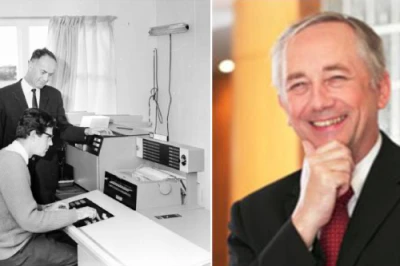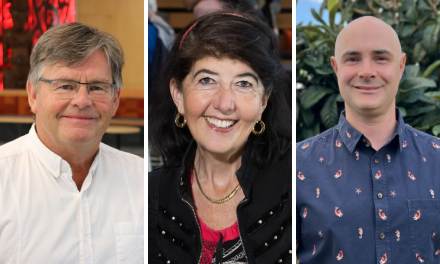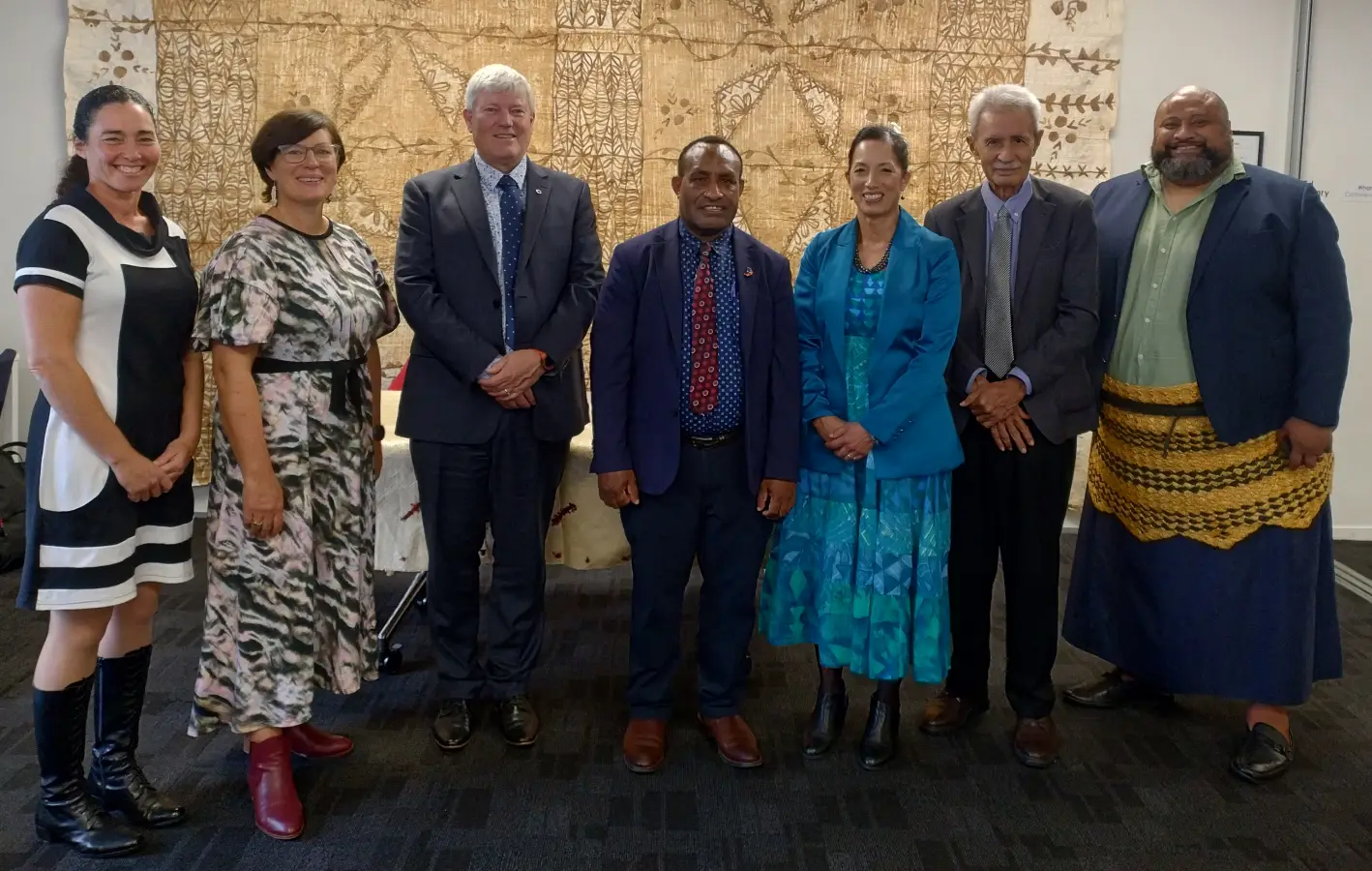
The University's first computer with staff (left) and Keith Jones (right).
In 1969, the University of Waikato purchased its first computer, an IBM 1130 with punch card input and a single disk drive that was about 40 cm in diameter. It was an exciting purchase orchestrated by an enthusiastic committee, but on its arrival, no one at the University was quite sure what to do with it.
Enter Keith Jones. Keith was a student with experience in computer programming, and was subsequently employed as the University’s first computer programmer and given the task of helping University staff to use this new technology.
Keith’s introduction to computing, and his later career, happened as a result of some well-timed mail. It was the mid-1960s, and Keith was trying to choose between a job in computing and studying to be a primary teacher. His fate was set when the letter of offer to primary teaching arrived just one day after he had already accepted a job as a computer programmer at R & W Hellaby in Auckland.
At that time, computer programming was an unexplored vocation for New Zealanders with very few computers in operation. Keith’s interest in computers was piqued as a teenager when he read his neighbour’s stack of science fiction magazines. “I read his whole box of magazines and became quite addicted to science fiction, and somewhere along the line computers became a feature.”
The first computer Keith worked on at Hellaby’s was a 2G ICL 1902 computer with 8K memory for which its primary use was to print invoices and statements every month. Keith learned on this system how to write programs, including an analysis for the sales manager. These skills would later come into use at university. “Writing programs in assembly language meant I understood the depths and the guts of the computer, I knew exactly what the computer was doing and I knew how to make the computer chips do the things I wanted them to do. That knowledge has underpinned my understanding ever since.”
After working at Hellaby’s for a few years, Keith decided he should get a degree, so he enrolled at the University of Waikato after being granted a Secondary Teachers’ Studentship by the Department of Education where students were paid $50 a month to study.
It was a wonderful time to be a student at the University during its infancy. Vice-Chancellor Don Llewellyn, lecturers and administration staff all knew Keith by name and he felt he could have a conversation with any one of them.
He says students were also involved in key decisions and the establishment of programmes. “In the beginning, there were only two degrees - Bachelor of Arts or Bachelor of Philosophy, which was for honours students. Eventually, the University called a meeting with the social science students and gave us the chance to name our degree and we decided on Bachelor of Social Science with the abbreviation BSocSc. It was a significant moment for the University.”
Keith’s profile with staff was heightened when roles reversed and he became a lecturer to the academic staff in a series of evening seminars on the topic ‘what is a computer’. “My first experience of teaching was to stand in a room with about 25 faculty members. I can assure you knees were knocking when I stood behind the lectern looking out at an audience full of professors and doctors,” he says.
In addition to delivering the lectures, Keith worked six hours a week assisting staff in the computer room. He worked alongside people from external organisations such as Ruakura Research Centre and Hamilton Medical Laboratories who came to use the University’s computer. This connection led to summer paid work for Keith when he helped get the same computer at Hamilton Laboratories operational.
The use of the University’s one computer increased when new lecturer David Swain initiated community surveys as part of the sociology programme. Sociology students stayed with the community in Tokoroa, and later Waihi, while completing a door-to-door survey which was eventually published into reports. Keith wrote a survey analysis program to tabulate survey results and the computer proved it had merit.
Since leaving the University, Keith has enjoyed a long career in teaching including as a headmaster until he retired at 65. He is very grateful for his time at the University of Waikato and the unique opportunity he had to be a teacher to his lecturers.



